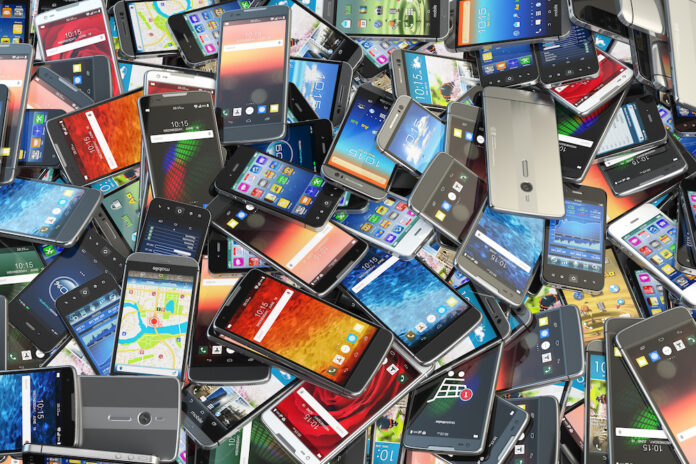12 global operators set new recycling take-back scheme goals to slash e-waste by 2030
The GSMA has teamed up with 12 global operators to come to grips with the estimated 5bn dormant and unused phones turning most households into handset museums.
BT Group, Globe Telecom, GO Malta, Iliad, KDDI, NOS, Orange, Proximus, Safaricom, Singtel, Tele2 and Telefonica signed up to a new set of targets, developed with the GSMA, designed to accelerate and build upon the work already being undertaken by the mobile industry as it takes steps to move away from the traditional “take-make-dispose” approach to the materials used in mobile phones.
The 12 are committing to increase the number of used mobile devices collected through operator take-back schemes to at least 20% of the number of new mobile devices distributed directly to customers by 2030. They will also try to prevent devices going to landfill or incineration by ensuring 100% of used mobile devices collected through operator take-back schemes will be repaired, reused or transferred to controlled recycling organisations.
The operators in the initiative, led by Tele2 and Orange, concede that further work is needed to address concerns that stop people from returning handsets, such as data privacy, the need to save data stored on devices and that some like having a drawer full of old phones.
“We believe in the need to move to a more circular economy to reduce the impact of mobile technology on the environment and applaud the latest commitments from 12 leading operators to accelerate the transition to greater circularity,” said GSMA chief regulatory officer John Giusti. “In addition to the environmental benefits, more efficient and responsible use of resources could lower costs and make devices more affordable for the unconnected.”
“It is only by working collectively that we can succeed, hence why Orange is playing a pivotal role in driving device longevity in the smartphone ecosystem, working with hardware and OS providers alike,” said Orange EVP, devices and partnerships, Philippe Lucas.
“The growing amount of e-waste, including mobile phones, that is generated each year is not only an environmental challenge for our industry, but also a huge loss of potential financial value,” said Tele2 head of sustainability Erik Wottrich. “As the environmental and business benefits of implementing a circular business model are clear, I hope that many more operators around the world will join us in the ambition of zero waste and increased take-back rate by 2030.”
Rare and getting rarer
The urge to act partly comes from the fact that rare earth elements, found in all devices, are getting rarer. The procurement of many rare elements used in smartphones comes with high energy and material requirements, which generates a significant amount of pollution, and causes greenhouse gas emissions.
Last November, the European Chemical Society (EuChemS) identified 30 elements usually used in smartphones. Out of these, 11 were identified as elements with limited availability, which may cause risks to future supply, while the unsustainable usage of seven elements used in smartphones would “pose a serious risk in the next 100 years”.
EuChemS called for Circular Economy initiatives to prevent the harmful consequences of rare material production, as rare earths can be recovered from e-waste. It also supported the EU “right to repair” regulation, which aims to extend the life of electronic devices instead of focusing on the creation of new ones, thereby decreasing rare earth procurement.
A refurbished phone can have 87% lower climate impact than a newly manufactured phone. The GSMA estimates that if properly recycled, 5bn mobile phones could recover US$8bn worth of gold, palladium, silver, copper, rare earth elements, and other critical minerals, and enough cobalt for 10 million electric car batteries.



